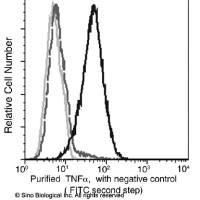Analysis of Angiogenesis in the Developing Mouse Central Nervous System
互联网
互联网
相关产品推荐

ELAVL2 HUB/ELAVL2 HUB蛋白Recombinant Human ELAV-like protein 2 (ELAVL2)重组蛋白ELAV-like neuronal protein 1;Hu-antigen B ;HuB;Nervous system-specific RNA-binding protein Hel-N1蛋白
¥1344

TNF-alpha / TNFA / TNFSF2 Antibody, Mouse MAb | TNF-alpha / TNFA / TNFSF2 鼠单抗
¥800

btuC/btuC蛋白/btuC; OE_2952FCobalamin import system permease protein BtuC蛋白/Recombinant Halobacterium salinarum Cobalamin import system permease protein BtuC (btuC)重组蛋白
¥69

Cell Cycle Analysis Kit (with RNase)(BA00205)-50T/100T
¥300

TCEANC2/TCEANC2蛋白Recombinant Human Transcription elongation factor A N-terminal and central domain-containing protein 2 (TCEANC2)重组蛋白TCEANC2; C1orf83; Transcription elongation factor A N-terminal and central domain-containing protein 2蛋白
¥1344
相关问答

